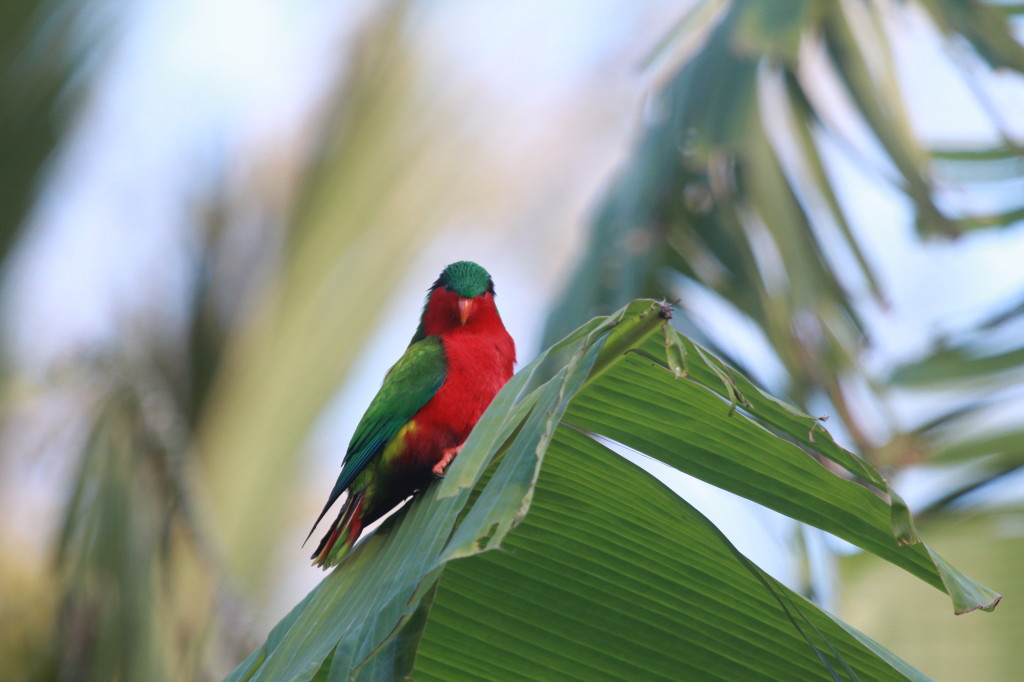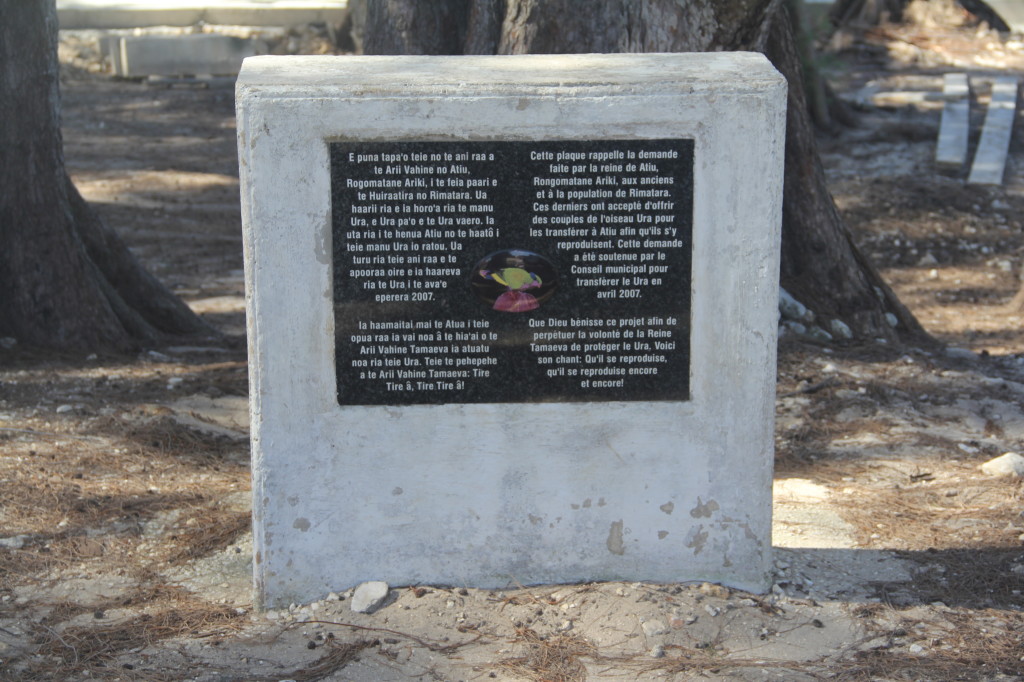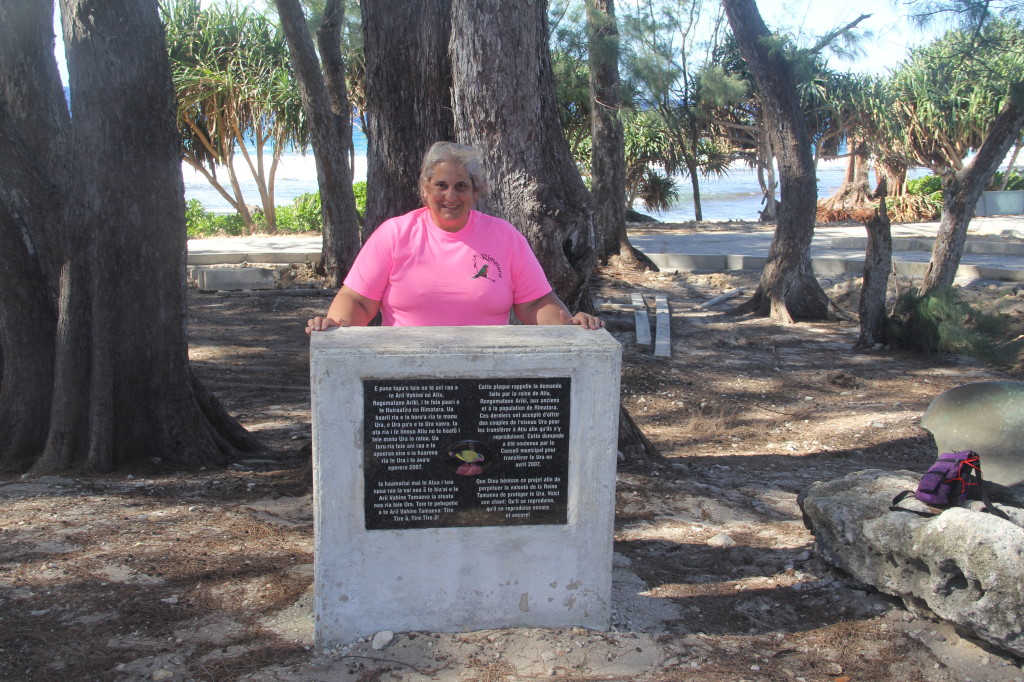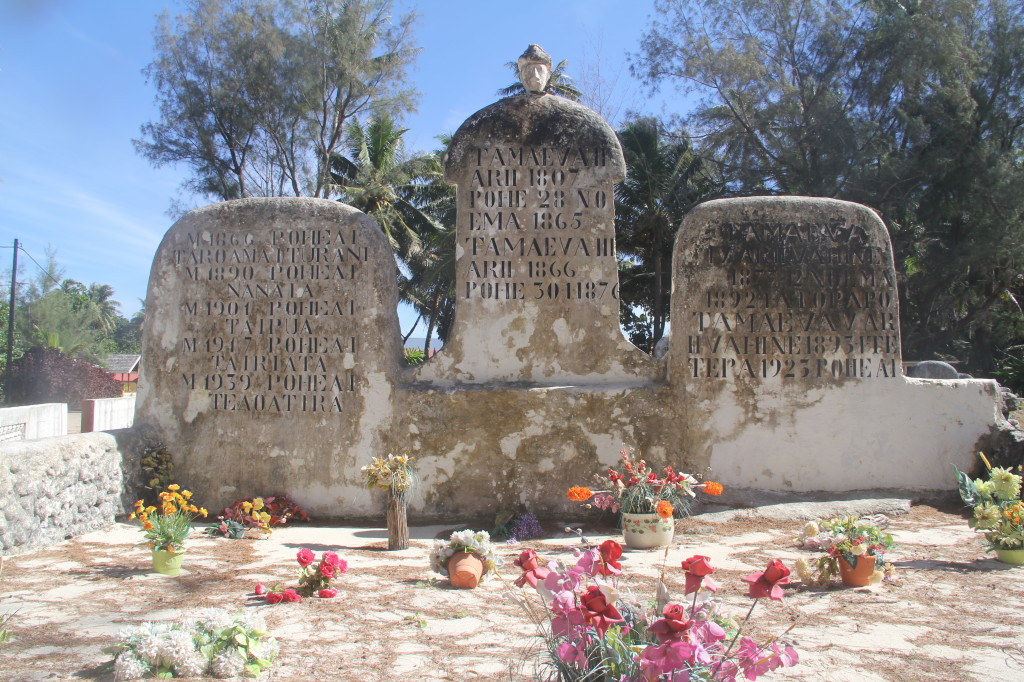No visit to Rimatara, especially one to see the beautiful Rimatara Lorikeets would be complete without a visit to the grave of Queen Temaeva (also spelled Tamaeva) in the village of Amaru.
.
Very little is actually known about her. She didn’t have a long reign, she died at a very young age. Wikipedia has a brief biography. Her father was King Tamaeva III of Rimatara, an island kingdom which also controlled the neighboring coral atoll of Nororotu (or Îles Maria), a claim it disputes with the neighboring kingdom of Rurutu. She was born during the period of westernization of the island and the Christian conversion of the islanders to the Protestant faith. Sources differ on her actual age and her date of birth, although it is certain that Tamaeva was only a teenager at the time of her death, which would place her birth in the early 1870s. Because of her youth and inexperience, her aunt Heimataura served as regent.
What you need to understand is that back in these days, it was customary for island royalty throughout the Pacific to decorate themselves with feathers. This sad tradition is still going on in places like Papua New Guinea where even whole birds are incorporated into dance costumes.
The beauty of birds was more often a curse as the island royals and warriors hunted the most beautiful birds into extinction. The brilliantly coloured Rimatara Lorikeet’s (known locally as “Ura”) red feathers were highly desirable to decorate these costumes.
 The Ura had been native to several Polynesian islands including Atiu and Rimatara but by the early 1800’s the species had been hunted into extinction on every island except Rimatara. It would have been only a matter of time before the beautiful Ura also disappeared from Rimatara if not for Queen Temaeva. She issued a “Tapu” (taboo or law) forbidding exporting, exploiting or harming the lory in any way. What also helped is that Rimatara had an abundance of food and no black rats. It has been said that Queen Temaeva wished that the birds should multiply forever and ever. This has been commemorated on twin plaques, one in Rimatara and one in Atiu.
The Ura had been native to several Polynesian islands including Atiu and Rimatara but by the early 1800’s the species had been hunted into extinction on every island except Rimatara. It would have been only a matter of time before the beautiful Ura also disappeared from Rimatara if not for Queen Temaeva. She issued a “Tapu” (taboo or law) forbidding exporting, exploiting or harming the lory in any way. What also helped is that Rimatara had an abundance of food and no black rats. It has been said that Queen Temaeva wished that the birds should multiply forever and ever. This has been commemorated on twin plaques, one in Rimatara and one in Atiu.

 More information can be found in the World Parrot Trust’s magazine, Psittascene, and on the Cook Islands Biodiversity website. We will never know what opened this young Queen’s heart and make her want to protect the birds at a time when her peers were wearing their feathers. I will always be grateful to her for doing so as it would have been a horrible tragedy to lose this beautiful bird from the planet. May you rest in peace, Queen Temaeva……………..and thank you for saving the Rimatara Lorikeet!
More information can be found in the World Parrot Trust’s magazine, Psittascene, and on the Cook Islands Biodiversity website. We will never know what opened this young Queen’s heart and make her want to protect the birds at a time when her peers were wearing their feathers. I will always be grateful to her for doing so as it would have been a horrible tragedy to lose this beautiful bird from the planet. May you rest in peace, Queen Temaeva……………..and thank you for saving the Rimatara Lorikeet!

